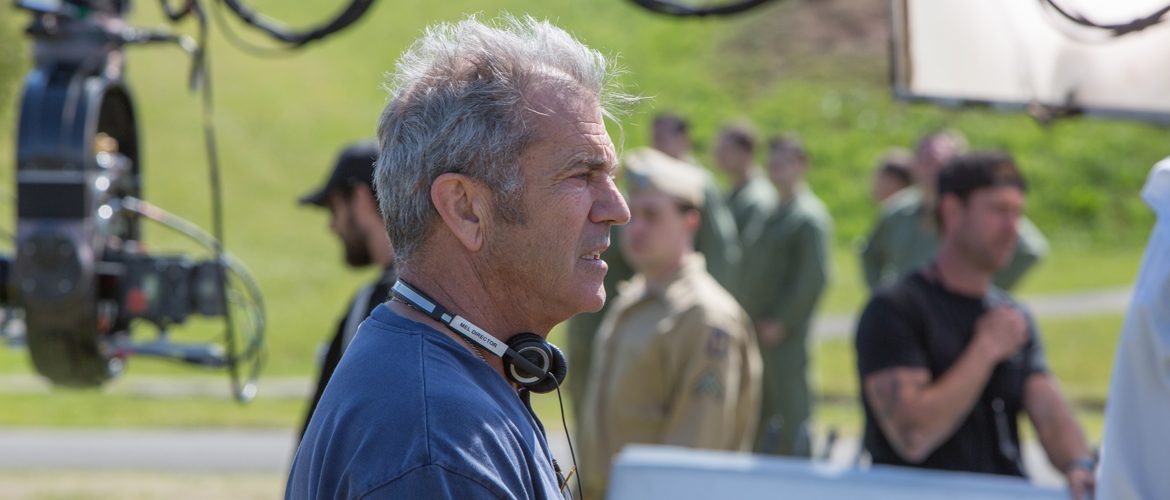By Diane Howard, Ph.D.
Desmond Doss is credited with saving 75 soldiers during one of the bloodiest battles of World War II in the Pacific—and he did it without ever carrying a weapon. The battle at Hacksaw Ridge, on the island of Okinawa, was a close-combat fight with heavy weaponry. Doss was given the Medal of Honor for gallantry and intrepidity above the call of duty, and he did the following while under heavy fire: he saved 75 men, refused to take cover, carried men one-by-one, and lowered them to safety. And, while exposed to heavy mortar and rifle fire, Doss rescued a man 200 yards in front of the lines. He then advanced through a shower of grenades to within eight yards of enemy forces, dressed four men’s wounds before making four separate trips under fire to bring men to safety. Under enemy shelling, he treated wounds and administered plasma. He carried one man—who was only 25 feet away from the enemy—to safety. After his legs were damaged by a grenade and his arm was shattered by gunfire, he crawled 300 yards to safety.
Doss was the only American soldier in WWII to fight on the front lines without a weapon, as he believed that while the war was justified, killing was nevertheless wrong. As an army medic, he single-handedly evacuated the wounded from behind enemy lines, braved fire while tending to soldiers, was wounded by a grenade, and hit by snipers. Doss was the first conscientious objector (he called himself a “conscientious cooperator” as he volunteered) to ever earn the Congressional Medal of Honor.
Desmond Doss knew his Bible and lived by its principles. He dedicated his life to his Lord and Savior, who both guided and protected him.
Dr. Diane Howard recently interviewed producer Terry Benedict. Benedict—who knew Doss personally—produced the award-winning documentary, “Conscientious Objector” (the original documentary on Desmond Doss), and he was a producer with Mel Gibson for “Hacksaw Ridge.” He also helped actor Andrew Garfield understand the life of Desmond Doss. “Hacksaw Ridge” also features Sam Worthington, Luke Bracey, Teresa Palmer, Hugo Weaving, Rachel Griffiths and Vince Vaughn (www.hacksawridge.movie).
DH: Why did give your original documentary its title?
TB: I wanted to convict and counter negative implications of the term “conscientious objector.”
DH: Why did Desmond Doss call himself a “conscientious cooperator?”
TB: Desmond never objected to the war. He was not a pacifist. He was eligible for a deferment because he was working at a shipyard in Newport News. But Desmond felt a moral obligation to fight for his country.
DH: How did Desmond develop his moral conscience and convictions?
TB: His mother had a strong influence on him. She taught him to love God and to serve his fellow men.
DH: How was Desmond able to serve as a non-combatant?
TB: President Roosevelt paved the way for non-combatants to serve with their beliefs honored.
DH: Why was he treated abusively by his unit?
TB: The army “did not get the memo” or chose not to get it. Desmond was abused in his unit for 2½ years. He was part of the 77th Statue of Liberty Division which rigorously trained as a whole division for a wide range of combat: mountain, desert, jungle warfare and more.
DH: Did this training prepare Desmond for the rigor required at Hacksaw Ridge?
TB: That may have been. At one point, he was considered the weakest link in his unit, but he became the strongest link, although he was a slight man of about 150 lbs.
DH: How did you encounter the story of Desmond Doss?
TB: I first read his story in WWII books, when I was about ten. He was the unlikeliest of heroes. I later met him at a church camp when I was twelve years old. He had a passion for youth, along with a strong moral compass. I later reconnected with him at a Metal of Honor reunion, where I learned that his men set him apart as a chaplain. He resisted anyone from Hollywood telling his story, because he wanted it accurate and for the glory to go to God.
DH: Why did he let you tell his story on film?
TB: He was like a grandfather to me. I told him I would answer to God first, then to him, and that the others would have to get in line. I told him we could do the documentary first.
DH: How did you guide Andrew Garfield on the life of Doss and prep him for the film, including a tour of Doss’s Virginia hometown?
TB: Andrew wanted to honor Desmond. I took him to Desmond’s Lookout Mountain. While visiting this site and through watching the documentary over and over, Andrew caught Desmond’s nuances: his gestures, thought process, psyche, values, and reactions. I took Andrew to the train trestle where Desmond put out pennies to flatten. Andrew learned how Desmond grabbed on to a milk truck to be pulled on his bicycle. Andrew was able to touch, feel, and sense Desmond and developed an uncanny likeness of him.
DH: How did you help him understand the understated role of military medics and how critical they are in times of war?
TB: Andrew was provided a military consultant and doctor.
DH: What can we learn today from Doss?
TB: We can learn—even the military community can learn—that people or soldiers are not cut out from cookie cutters, and that there is a place for people with different values to make a significant contribution.
DH: What are the timely implications for today of this story and movie?
TB: There are important universal themes in this movie, especially that no matter how bad or how tough life can be, we can always make it through with faith and with God.
DH: Beyond the brilliant artistry and exceptional acting in the movie, why do you think this movie is resonating as it is today?
TB: It is not an agenda movie. There is an innocence to it. It presents a true Christian role model, who is accountable to his values and is fearless in trying to help people. Desmond broke down at one point and told me that on Hacksaw Ridge, he thought he was on the verge of a nervous breakdown and was totally spent, but he kept asking God to help him rescue one more man.
DH: How does this movie serve veterans and their families?
TB: It shows how there are no atheists in foxholes and how once one is in a foxhole, everything disappears and one reaches out to a higher power. Foxholes lead to “come to Jesus moments.” Desmond Doss never proselytized. He was graceful. He did what was right for God and men. He had three loves: God, his men, and his wife. His sacrifice and service and those of other military personnel should never forgotten.
DH: I have read that you want to create films that inspire and promote positive messages from a Creator-based perspective to the global community. What do you mean by “Creator-based.”
TB: I mean God-based. I do not want to create films that are preachy. I want them to be a bridge to better choices and an inspiration.
 “Hacksaw Ridge” has been nominated for three Golden Globes® including Best Picture—Drama. The acclaimed film has also been nominated for six Academy Awards® including Best Picture, Best Director (Gibson), Best Actor (Garfield), as well as for Best Film Editing, Best Sound Editing and Best Sound Mixing.
“Hacksaw Ridge” has been nominated for three Golden Globes® including Best Picture—Drama. The acclaimed film has also been nominated for six Academy Awards® including Best Picture, Best Director (Gibson), Best Actor (Garfield), as well as for Best Film Editing, Best Sound Editing and Best Sound Mixing.
“Hacksaw Ridge” (rated R for military violence) is the extraordinary true story of WWII army medic Doss, played by Garfield. Doss’ courage was exemplified in the simple prayer he uttered as he single-handedly evacuated the wounded from behind enemy lines, braved fire while tending to soldiers, was wounded by a grenade, and hit by snipers.
The fighting in Hacksaw Ridge took place on the Maeda Escarpment, a steep slope or long cliff that separated two relatively level areas of differing elevations, in April 1945. The battlefield was located on the top of a sheer 400-foot cliff. It was fortified with deadly Japanese machine gun nests and booby traps. The escarpment was nicknamed Hacksaw Ridge for the treacherously steep cliff. What took place here was the key to winning the battle of Okinawa. The mission seemed near-impossible, hellish, and horrific. When Doss’s battalion was ordered to retreat, Doss, who depended on God, refused to leave his fallen comrades behind.
As he faced heavy machine gun and artillery fire, he repeatedly ran alone into the kill zone, carrying wounded soldiers to the edge of the cliff and then single-handedly lowered them to safety. As he continuously saved men’s lives, Doss prayed aloud, “Lord, please help me get one more.” This incredible film with Mel Gibson’s skillful directing and with Andrew Garfield’s stunning performance as Doss earned a 10-minute standing ovation at its Red Carpet world premiere at the Venice Film Festival in September.
On October 12, 1945, President Harry S. Truman warmly held the hand of Corporal Desmond Thomas Doss, while his citation was read in the White House. Truman said, “I’ m proud of you…you really deserve this. I consider this a greater honor than being president.”
This movie celebrates Desmond Doss and the brave soldiers that have fought for our country. This film brings a greater level of awareness and appreciation to the sacrifice of our service members of what they truly experience in war. It inspire our honor, respect, and attention, encouraging us to never forget them This movie celebrates every day heroes in this country and around the world who stand by their principles, their convictions and their beliefs with the intent of contributing to the world in a peaceful and positive way.
Doss never lived to see his story on the big screen. He died in 2006, but he now lives on screen to inspire the world.
Hacksaw Ridge is now available on Digital HD, 4K Ultra HD Combo Pack (plus Blu-ray and Digital HD), Blu-ray Combo Pack (plus DVD and Digital HD), DVD and On Demand from Summit Entertainment, a LIONSGATE Company.

